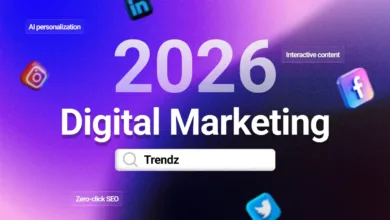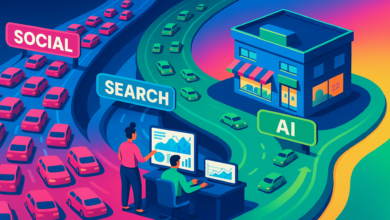Google Urges Retailers: Use AI to Dominate Extended Holiday Sales

▼ Summary
– U.S. impulse purchases decreased from 30% to 26% last year, and holiday spending is now spread from October to January, extending the shopping season.
– Retailers must adapt by engaging consumers earlier, staying visible longer, and using smarter tools to capture demand amid increased research and budget-consciousness.
– Google advises using AI-powered tools like Search Overviews and AI Max for Search campaigns to connect with shoppers during the discovery phase of broad, conversational queries.
– The company highlights YouTube shopping features, Demand Gen for omnichannel sales, and new loyalty offerings to drive conversions and customer retention.
– While Google’s AI tools can optimize campaigns and improve efficiency, advertisers should combine them with human oversight to avoid errors and ensure authentic customer connections.
The holiday shopping season has fundamentally changed, stretching from October well into January and demanding a more strategic approach from retailers. According to a recent Ipsos study commissioned by Google, impulse purchases dropped from 30% to 26% last year, signaling that consumers are taking more time to research and budget their spending. This extended timeline means retailers must adapt quickly to capture attention and drive sales throughout the entire season.
The traditional Black Friday rush is no longer sufficient to meet modern consumer behavior. People now spread their purchases over several months, comparing options and prioritizing value. This shift presents both a challenge and an opportunity, brands need to engage shoppers earlier, maintain visibility longer, and leverage intelligent tools to connect at critical decision-making moments.
Google emphasizes the importance of meeting shoppers during the discovery phase. With over five trillion annual searches and more than 60% of queries being broad and conversational, customers often seek inspiration rather than specific products. The company recommends using AI-powered Search Overviews and AI Mode to position ads where early exploration happens. Its newly launched AI Max for Search campaigns, currently in global beta, aims to simplify tapping into these discovery moments with a single click.
Video platforms also play an increasingly vital role in the customer journey. Google points to YouTube as a key touchpoint where browsing often turns into buying. Its Demand Gen product now optimizes for omnichannel sales and can highlight local offers for nearby shoppers. Additionally, the Creator partnerships hub and shoppable YouTube Masthead provide further avenues for boosting conversion rates.
On the performance side, Google is rolling out enhanced Merchant Center insights designed to detect demand shifts early. Tools like Product Studio and Asset Studio use generative AI, including Imagen 4, to expand creative possibilities for retailers. Campaigns can now be managed with a unified budget across Search, Performance Max, Shopping, YouTube, and Demand Gen for periods ranging from three to ninety days. Google’s AI automatically reallocates spending to align with peak demand periods.
Building lasting customer relationships is another focal point. New loyalty features allow advertisers to display member-only pricing, promote shipping benefits, and set retention targets directly within Shopping campaigns. Early adopters like Sephora have already seen promising results using these tools.
The overarching message from Google is straightforward: adapting to the elongated and more deliberate holiday shopping cycle requires smarter, AI-enhanced strategies. However, while tools like AI Max offer impressive optimization capabilities, they are still evolving. Advertisers should balance automation with human oversight, monitoring campaigns closely, testing outcomes, and ensuring brand consistency. Relying solely on AI can lead to misaligned messaging, inefficient spending, or missed opportunities for genuine customer connection. The most effective approach combines algorithmic power with seasoned judgment.
(Source: Search Engine Land)





